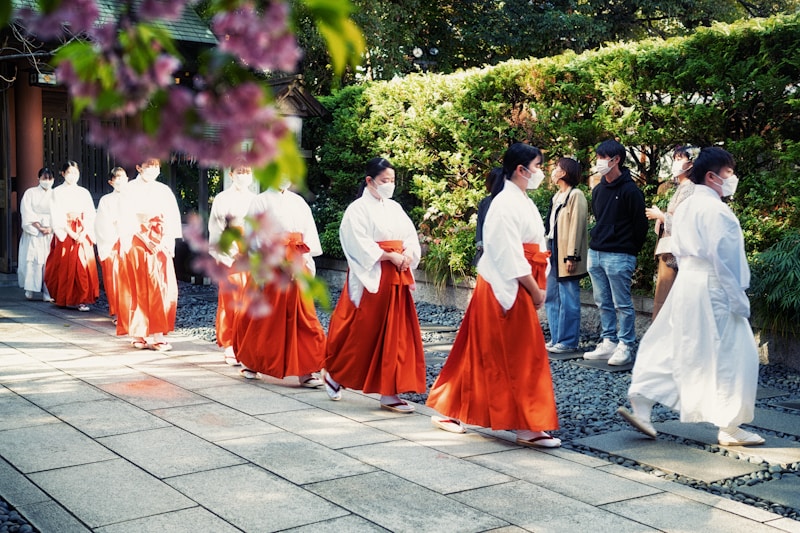Cultural Influences on Wedding Traditions
Cultural Influences on Wedding Traditions
Weddings are one of the most significant events in a person’s life, symbolizing love, commitment, and the merging of families. However, wedding traditions can vary dramatically across different cultures and regions. This article explores the cultural influences on wedding traditions, examining how various factors such as religion, ethnicity, geography, and even historical events shape the way societies celebrate marriage.
Understanding Cultural Influences
Culture encompasses the social behavior, norms, beliefs, and collective practices shared by a group. These cultural dimensions significantly influence wedding traditions, from the way ceremonies are conducted to the rituals performed. Key aspects that shape these traditions include:
- Religious Beliefs: Different religions have unique rituals and customs surrounding weddings.
- Ethnic Background: Ethnicity plays a vital role in determining specific practices and attire.
- Historical Context: Historical events can change societal norms, impacting how weddings are celebrated.
- Geographical Location: The local environment can influence the materials used for decorations, attire, and even cuisines served.
Religious Influences on Wedding Traditions
Religious beliefs dictate numerous aspects of wedding ceremonies, particularly the vows exchanged and the roles of officiants. For example, in Christian weddings, a clergy member often presides over the ceremony, and couples exchange vows that include promises before God. Conversely, in Hindu weddings, various rituals, such as the ‘Saptapadi’ or seven vows taken around a sacred fire, are performed to symbolize commitment.
Examples of Wedding Traditions by Religion
| Religion | Key Traditions |
|---|---|
| Christianity | Exchange of vows and rings, unity candle lighting |
| Hinduism | Saptapadi, Kanyadaan (giving away the bride) |
| Islam | Signing of the marriage contract (Nikah), Walima feast |
| Buddhism | Blessings from a monk, meditation rituals |
Ethnic Influences on Wedding Traditions
Each ethnic group has its unique traditions that distinguish its weddings from others. In Chinese culture, for instance, red is an auspicious color, and couples often wear red attire. The Chinese also engage in a tea ceremony, which symbolizes respect and gratitude towards family. On the other hand, in African tribes such as the Maasai, traditional attire and communal celebrations involving dance and songs play a pivotal role in the wedding process.

Wedding Attire Across Cultures
Weddings are oftentimes a colorful spectacle, showcasing the couple’s ethnic backgrounds through attire. Here’s a brief look at traditional wedding attire across various cultures:
| Culture | Typical Attire |
|---|---|
| Indian | Saree or lehenga for women; Sherwani for men |
| Scottish | Kilt for men, traditional dresses for women |
| Japanese | Kimono for both bride and groom |
| Italian | Classic white dresses and tailored suits |
Geographical Factors Influencing Weddings
The geographical location can greatly influence wedding traditions, especially in terms of climate and available resources. For example, weddings in tropical regions may involve beach ceremonies, which are not as common in colder climates. Furthermore, local foods and traditions manifest themselves through the cuisine served at weddings. In Mediterranean cultures, wedding feasts can include intricate dishes featuring fresh seafood and local wines, while in cultures where rice is a staple, rice dishes might take center stage.
Impact of Historical Factors on Weddings
Historical events shape cultural practices, including weddings. For instance, during the post-war era, weddings often served as an escape from the harsh realities of life, leading to more extravagant celebrations. Similarly, the economic conditions of a region can dictate the scale and nature of weddings. During times of prosperity, elaborate weddings with extensive guest lists might be the norm, while economic downturns could see a shift toward intimate, budget-friendly ceremonies.
Modern Trends Influencing Wedding Traditions
In recent years, globalization has introduced new trends and ideas into traditional wedding practices. Intercultural marriages, social media influence, and celebrity weddings shape how couples approach their own celebrations. For instance, many couples today choose to blend elements from both of their cultures, creating a unique wedding that honors their heritages.
Additionally, the rise of destination weddings has changed the landscape of traditional ceremonies. Couples are increasingly opting for scenic locales, from beach resorts to historic landmarks, often resulting in a fusion of various cultural elements.
Common Questions About Cultural Influences on Wedding Traditions
As you dive deeper into the topic of wedding traditions, you may encounter a few common questions, such as:
- What are some unique wedding traditions from around the world?
- How do modern influences alter traditional wedding customs?
- Why is it important to honor cultural traditions in weddings?
Conclusion
In conclusion, cultural influences on wedding traditions are vast and varied. They reflect the beliefs, values, and historical contexts of the people involved, making each wedding a unique celebration of love and unity. As couples navigate their journey towards marriage, understanding these cultural nuances can bring deeper meaning and richness to their celebrations. Whether through elaborate rituals or shared meals, the beauty of wedding traditions lies in their ability to connect individuals to their heritage while embracing the future.
As you plan your wedding, consider incorporating elements that honor both your cultural backgrounds. This practice not only adds depth to your celebration but also creates lasting memories that pay tribute to the diverse influences that have shaped your lives. Stay informed about evolving trends while maintaining a focus on your cultural roots, ensuring that your wedding is a true reflection of who you are as a couple.
